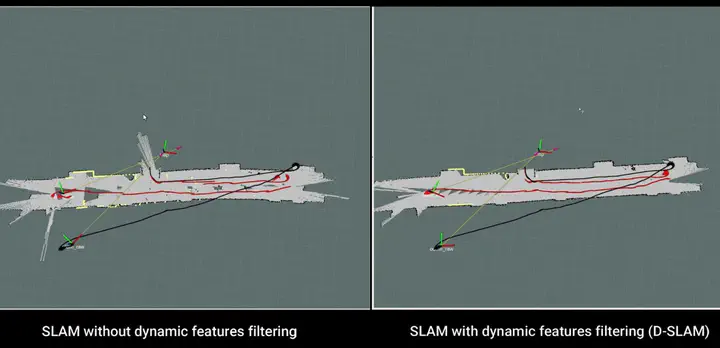Dynamic SLAM using landscape theory of aggregation [Implementation]
By Parv Parkhiya, Akshit Gandhi, Avinash Hemaeshwara Raju
 SLAM vs Dyanmic SLAM comparision
SLAM vs Dyanmic SLAM comparision
Simultaneous Localization and Mapping (SLAM) is an essential part of any mobile robot. While the current stateof-the-art approach solves the problem in a static environment reasonably well, the performance in a dynamic environment is hit or miss. The traditional SLAM method assumes that the number of measurements from static objects would be large enough to dominate measurements from dynamic objects. We advocate for the explicit filtering of measurements from dynamic objects for better localization and mapping performance. We use the landscape theory of aggregation method to form an optimization problem. We observe the measurements for a timewindow and compute weights for the optimization. We perform gradient descent to minimize the energy to classify and filter out measurements from dynamic objects. Finally, using ROS’s GMapping Package we show improved SLAM output.